The Transformer "Phase I": How Your Liver Activates the Cleanup Process

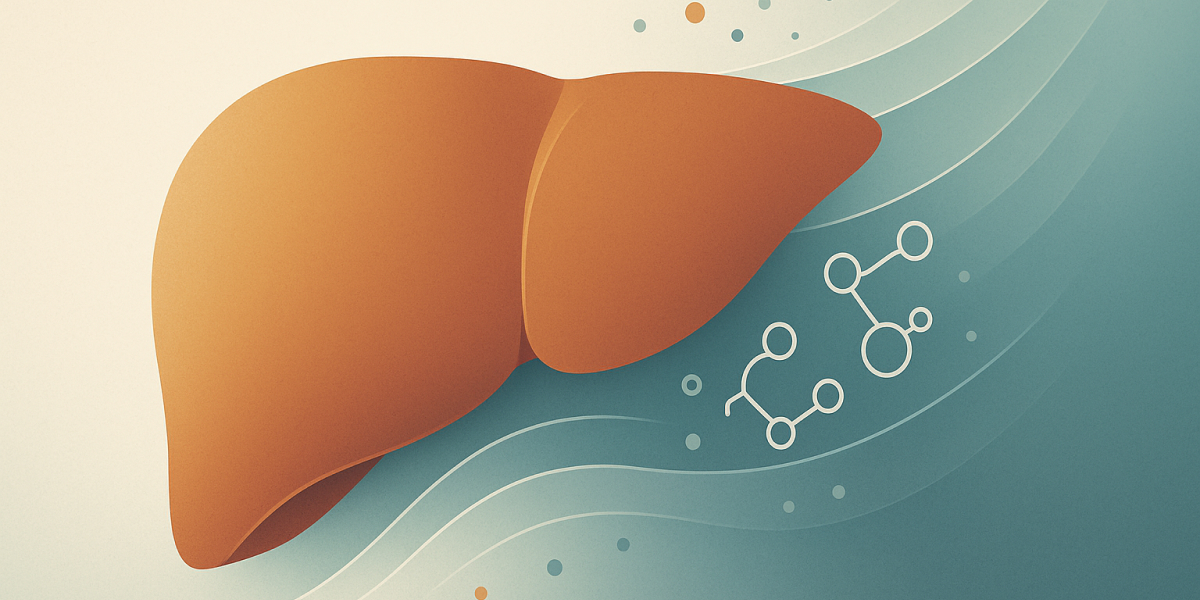
If your body's detoxification system is a three stage factory, Phase I is where the raw materials first arrive and get broken down for processing. It's also where things can get dangerous if the system isn't working properly. Phase I doesn't actually detoxify anything in the traditional sense. Instead, it transforms compounds to prepare them for the real detoxification that happens in Phase II.
Here's the counterintuitive part that most people don't understand, Phase I often makes toxins MORE dangerous before they become less dangerous. It's a bit like demolition before construction. You have to break something down before you can rebuild it into something better. And just like a demolition site, if you don't clean up the debris quickly, you're left with a hazardous mess.
Meet the Cytochrome P450 Enzymes
Phase I is dominated by a family of enzymes called cytochrome P450s, or CYPs for short. These are some of the most important enzymes in your body, and you have about 50 different types of them, each with slightly different jobs. The CYPs are primarily located in your liver, though you also have them in your intestines, lungs, and kidneys.
Think of CYPs as molecular scissors or keys that unlock chemical bonds. They work by adding or exposing reactive chemical groups on molecules, which makes those molecules more water soluble and prepares them for Phase II. The main chemical reactions that CYPs perform include oxidation (adding oxygen), reduction (adding electrons), and hydrolysis (adding water). Oxidation is by far the most common, which is why Phase I is sometimes called the "oxidation phase."
The CYP enzymes are incredibly versatile. They can work on thousands of different compounds, which is exactly what you need when you're exposed to so many different chemicals. They handle everything from the caffeine in your morning coffee to the alcohol in your evening wine, from the medications you take to the environmental toxins you breathe.
The Double Edged Sword: Creating Reactive Intermediates
Here's where Phase I gets tricky. When CYPs break down a compound, they often create what's called a reactive intermediate. These are molecules that are temporarily MORE toxic and MORE reactive than the original compound. They're chemically unstable and looking to react with something, anything, to stabilize themselves.
If Phase II is ready and waiting to quickly grab these reactive intermediates and neutralize them, everything works beautifully. The toxic compound gets transformed, conjugated, and shipped out of your body. No problem.
But if Phase II is slow or overwhelmed, those reactive intermediates stick around. And when they do, they can cause serious damage. They create oxidative stress, meaning they generate free radicals that can damage your DNA, proteins, and cell membranes. This is why Phase I activity needs to be balanced with Phase II activity. A fast Phase I with a slow Phase II is a recipe for cellular damage.
Think of it like a kitchen. If you're chopping vegetables faster than you can cook them, you end up with a countertop full of food that's starting to brown and oxidize. The prep work (Phase I) needs to match the cooking speed (Phase II).
What Phase I Processes
Phase I handles a massive range of compounds. Here's what your CYP enzymes are working on every single day:
Medications: Most pharmaceutical drugs need to go through Phase I before your body can eliminate them. This includes common pain relievers, antibiotics, statins, blood pressure medications, and antidepressants. Some drugs are actually inactive until Phase I converts them into their active form.
Caffeine: Your morning coffee or tea gets metabolized by CYP1A2. People with faster versions of this enzyme can drink coffee late in the day with no problem. People with slower versions feel jittery and can't sleep.
Alcohol: The enzyme alcohol dehydrogenase handles the first step of alcohol breakdown, but CYP2E1 also plays a major role, especially when you're drinking larger amounts. This is why chronic alcohol consumption can actually speed up your Phase I over time, making it work faster.
Steroid hormones: Your body's own hormones, including estrogen, testosterone, progesterone, and cortisol, all need to be broken down by Phase I when your body is done with them. This is crucial for hormone balance.
Environmental toxins: Pesticides, herbicides, industrial chemicals, plastics, heavy metals, air pollutants, and cigarette smoke all get processed through Phase I. With the unprecedented chemical exposure we discussed in Your Body's 24/7 Cleanup Crew: What Detoxification Actually Means, your Phase I is working harder than ever.
Food compounds: Even natural compounds from food need processing. This includes everything from the chemicals in charred meat to the natural toxins in certain plants. Here's the good news, this is one area where you have significant control. Whole, unprocessed foods create far less burden on Phase I than processed foods loaded with preservatives, artificial colors, flavor enhancers, and chemical additives. Every time you choose real food over packaged food, you're reducing the workload on your detox system. While you can't control the air quality outside or eliminate all plastic exposure, you absolutely can control what you put on your plate three (or more!) times a day.
When Phase I Goes Wrong: Too Fast or Too Slow
Your Phase I can run into problems in two main ways. It can be too slow, or it can be too fast. Both create issues.
Phase I Too Slow: When your CYP enzymes aren't working efficiently, toxins and medications build up in your body because they're not being broken down fast enough. You might experience increased sensitivity to medications (needing lower doses than most people), adverse reactions to supplements or drugs, intolerance to caffeine or alcohol, strong reactions to fragrances or chemicals, and general sluggishness with toxin elimination.
A slow Phase I means compounds are hanging around in their original form longer than they should, continuing to exert their effects. This is why some people are considered "poor metabolizers" of certain drugs. Their Phase I enzymes just don't process those compounds efficiently.
Phase I Too Fast: This might sound better, but it's actually often worse. When Phase I is running too quickly, it's creating reactive intermediates faster than Phase II can handle them. This leads to a buildup of those dangerous reactive compounds we talked about. The results can include increased oxidative stress and free radical damage, inflammation, faster aging, higher risk of certain cancers (because those reactive intermediates can damage DNA), liver stress, and symptoms like fatigue, brain fog, and chemical sensitivities.
People with very fast Phase I are sometimes called "extensive metabolizers." They might be able to drink several cups of coffee with no effect because their body processes caffeine so quickly. But this speed comes with a cost if Phase II can't keep up.
The Genetic Factor: Why We're All Different
Here's where your genetics come into play. The genes that code for your CYP enzymes come in different variants, and these variants determine how fast or slow your Phase I runs. This matters enormously when you consider the 350,000 synthetic chemicals we're all exposed to daily.
The most important CYP genes and what they handle:
CYP1A1 and CYP1A2
These are your frontline defenders against environmental toxins. Genetic variants here determine how well you handle air pollution, smoke exposure, and dietary toxins.
- Polycyclic aromatic hydrocarbons (PAHs) from grilled and charred foods, car exhaust, and cigarette smoke
- Heterocyclic amines (compounds formed when meat is cooked at high temperatures, especially when charred or grilled)
- Pesticides and industrial chemicals like dioxins
- Caffeine (CYP1A2), which is why some people are fast caffeine metabolizers and others are slow
CYP1B1
This enzyme handles both your body's natural estrogen and "estrogen like" chemicals from the environment. Variants affect how well you detoxify these compounds, which has major implications for hormone balance in both men and women.
- Your body's own estrogen that needs to be broken down and eliminated
- Xenoestrogens (estrogen mimicking compounds) from plastics, particularly BPA and phthalates
- Pesticides with estrogenic activity
- Parabens and other estrogen-like chemicals in personal care products
- PAHs and other environmental carcinogens
Here's why this matters, your CYP1B1 evolved to handle your body's natural estrogen production. But now it also has to process all the fake estrogens from our plastic saturated world. This creates a much higher burden on the system. For women dealing with estrogen dominance or men with hormone imbalances, sluggish CYP1B1 variants combined with high xenoestrogen exposure can be a perfect storm.
CYP2E1
This enzyme breaks down alcohol, but it's also responsible for metabolizing industrial solvents and chemicals. Chronic alcohol consumption actually induces this enzyme, making it work faster and creating more oxidative stress.
- Benzene from gasoline fumes and industrial emissions
- Styrene from plastics and building materials
- Trichloroethylene (industrial solvent)
- Acetone from nail polish remover and industrial use
- Vinyl chloride used in PVC plastics
CYP2C9 and CYP2C19
These enzymes are major players in breaking down agricultural chemicals. They also metabolize several common medications, which is why genetic testing for these variants is becoming more common.
- Organophosphate pesticides common in agriculture
- Various fungicides and herbicides
- Certain plasticizers and industrial additives
CYP2D6
One of the most variable CYP genes, with some people having multiple copies (ultra rapid metabolizers) and others having barely functional versions (poor metabolizers).
- Environmental toxins and neurotoxic compounds
- Also known for metabolizing certain medications
CYP3A4
This is the absolute workhorse of Phase I, handling the largest variety of compounds. Its primary evolutionary job was handling plant compounds, but now it's overwhelmed with synthetic chemicals.
- Phthalates (plasticizers in food packaging and personal care products)
- Bisphenol A (BPA) and relatives from plastics and receipts
- Pesticide residues on food
- Aflatoxins (mold toxins in grains and nuts)
- Massive range of industrial chemicals and pollutants
- Also metabolizes about half of all pharmaceutical drugs
CYP2A6
This enzyme handles tobacco related compounds and certain food toxins.
- Nicotine and nitrosamines (carcinogens in tobacco smoke and preserved foods)
- Coumarin found in some plants and fragrances
- Various environmental pollutants
These genetic differences explain why some people seem more resilient to environmental toxins while others develop chemical sensitivities. Why one person can work with cleaning chemicals all day and feel fine, while another gets headaches and brain fog from the same exposure. Why some people living in polluted cities seem unaffected while others develop respiratory issues. It's not just about total exposure. It's about how efficiently your particular genetic variants can process that exposure.
What Can Go Wrong: The Oxidative Stress Problem
The biggest issue with Phase I is the oxidative stress it creates. When CYPs work, they don't just transform the target compound. They also produce free radicals as byproducts. And when those reactive intermediates are generated, they add to the free radical load.
Free radicals are unstable molecules that steal electrons from other molecules to stabilize themselves. When they do this, they damage whatever they steal from, whether that's your DNA, your cell membranes, or your proteins. This process is called oxidative damage, and it's one of the primary mechanisms of aging and disease.
This is exactly why Phase I and Phase III (which includes your antioxidant defenses) need to work together. Phase I creates the oxidative stress, and Phase III's antioxidant systems need to neutralize it. If your antioxidant defenses are depleted, Phase I becomes a liability.
Supporting Phase I: The Fundamentals Win
The goal with Phase I isn't to speed it up or slow it down arbitrarily. The goal is to optimize it and balance it with Phase II and Phase III. Here's what's fascinating, as you dig into the research on supporting Phase I, you keep coming back to the same foundational principles that support nearly every system in your body. There's no magic bullet or exotic supplement that fixes Phase I in isolation. It's the basics, done consistently.
The core nutrients Phase I needs:
Your CYP enzymes are built from protein and depend on specific vitamins and minerals to function. These are the same nutrients that support methylation, energy production, and countless other processes.
- B vitamins (B2, B3, B6, B12, folate) are essential cofactors for CYP enzymes
- Magnesium helps enzymes function properly throughout the body
- Quality protein provides the amino acids needed to build CYP enzymes
- Iron and zinc support enzyme activity
You get these from whole, protein-rich foods. Eggs, fish, poultry, legumes, nuts, seeds. The same foods that support every other system in your body.
Antioxidants to buffer oxidative stress:
Remember, Phase I creates free radicals as it works. Your body needs antioxidants to neutralize that damage.
- Vitamin C and vitamin E from whole food sources
- Carotenoids from colorful vegetables (the more colors on your plate, the better)
- Polyphenols from berries, green tea, and dark chocolate
- Selenium from Brazil nuts, fish, and eggs
Again, this comes down to eating a variety of whole, colorful plant foods. The same advice you've heard for reducing inflammation, supporting brain health, and preventing chronic disease.
Compounds that modulate Phase I:
Certain foods contain compounds that help regulate how fast or slow Phase I runs, keeping it in balance.
- Cruciferous vegetables (broccoli, cauliflower, Brussels sprouts, kale, cabbage)
- Turmeric and curcumin
- Green tea
- Garlic and onions
Notice a pattern? These are the same foods that show up on every "healthiest foods" list.
The lifestyle factors that matter:
This is where it gets really interesting. Supporting Phase I isn't just about what you eat. It's about how you live.
- Adequate sleep allows your liver to do its detox work efficiently
- Regular exercise supports overall detoxification and helps your body manage oxidative stress
- Stress management matters because chronic stress depletes antioxidants and impairs liver function
- Reducing alcohol consumption prevents overworking CYP2E1 and creating excessive oxidative stress
- Minimizing exposure to environmental toxins when possible (choosing organic when you can, filtering your water, avoiding unnecessary chemical exposure)
What to specifically avoid or limit:
- Chronic alcohol consumption, which induces CYP2E1 and dramatically increases oxidative stress
- Excessive caffeine if you're a slow metabolizer (one or two cups in the morning is fine for most people)
- Grapefruit juice if you're on medications, as it inhibits CYP3A4
- Smoking and secondhand smoke exposure
- Unnecessary exposure to industrial chemicals, solvents, and harsh cleaning products
The Pattern You Can't Ignore
Here's what becomes obvious when you study detoxification support: it all comes down to the fundamentals. Whole foods instead of processed foods. Colorful vegetables and quality protein. Regular movement. Good sleep. Stress management. Limiting alcohol. Reducing toxic exposures where you can control them.
These aren't sexy or revolutionary recommendations. But they work because your body's systems are interconnected. The same nutrients that support Phase I also support Phase II conjugation pathways and Phase III antioxidant defenses. The same lifestyle habits that optimize detox also optimize energy production, hormone balance, immune function, and brain health.
You don't need expensive specialty supplements or extreme detox protocols. You need consistent attention to the basics. That's what actually moves the needle.
The Critical Insight: Phase I Isn't the End
This is the most important thing to understand about Phase I: it's not where detoxification is completed. It's where detoxification is initiated. Those reactive intermediates MUST be handled by Phase II, or you're actually worse off than if Phase I hadn't worked at all.
This is why so many "detox" programs can actually make people feel worse. If you stimulate Phase I without supporting Phase II and Phase III, you're creating a traffic jam of reactive intermediates. People feel more toxic, not less, because they are more toxic at the cellular level.
A well functioning detoxification system requires all three phases working in harmony. Phase I is essential, but it's just the beginning of the story. In the next article, The Neutralizer “Phase II”: Making Toxins Water Soluble for Exit, we'll dive into Phase II, where those reactive intermediates finally get neutralized and prepared for elimination. That's where the real magic happens.
Your Phase I is working right now, transforming compounds as you read this. The question is, do you have the nutrients, the antioxidants, and the genetic understanding to make sure it's working optimally and safely? That's what supporting this system is all about.



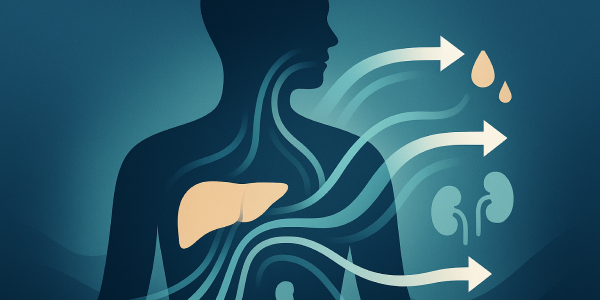
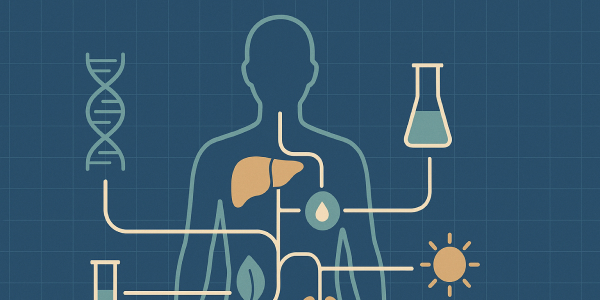

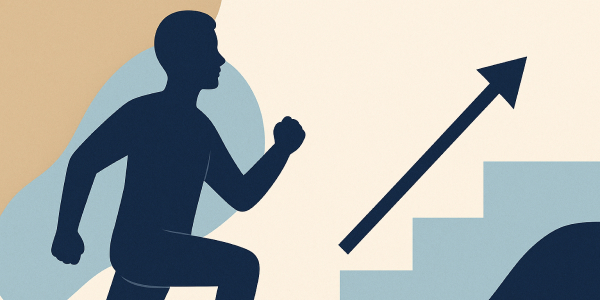
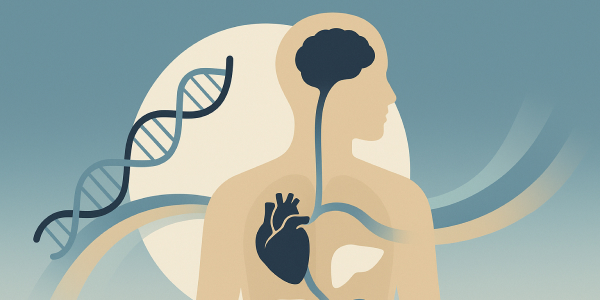
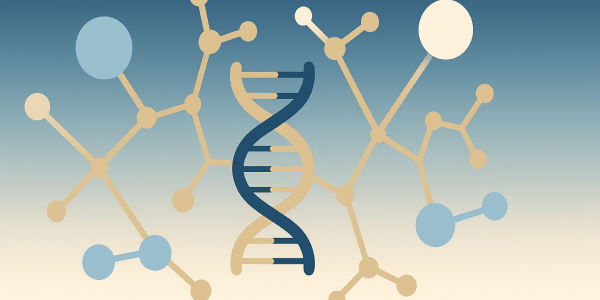

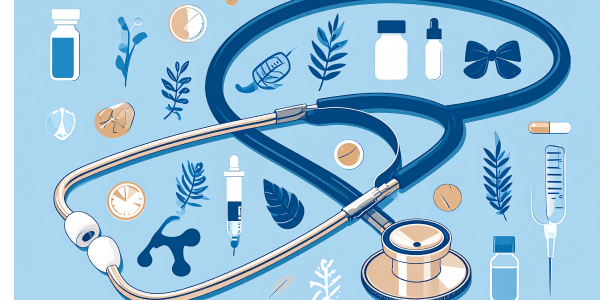
.svg)